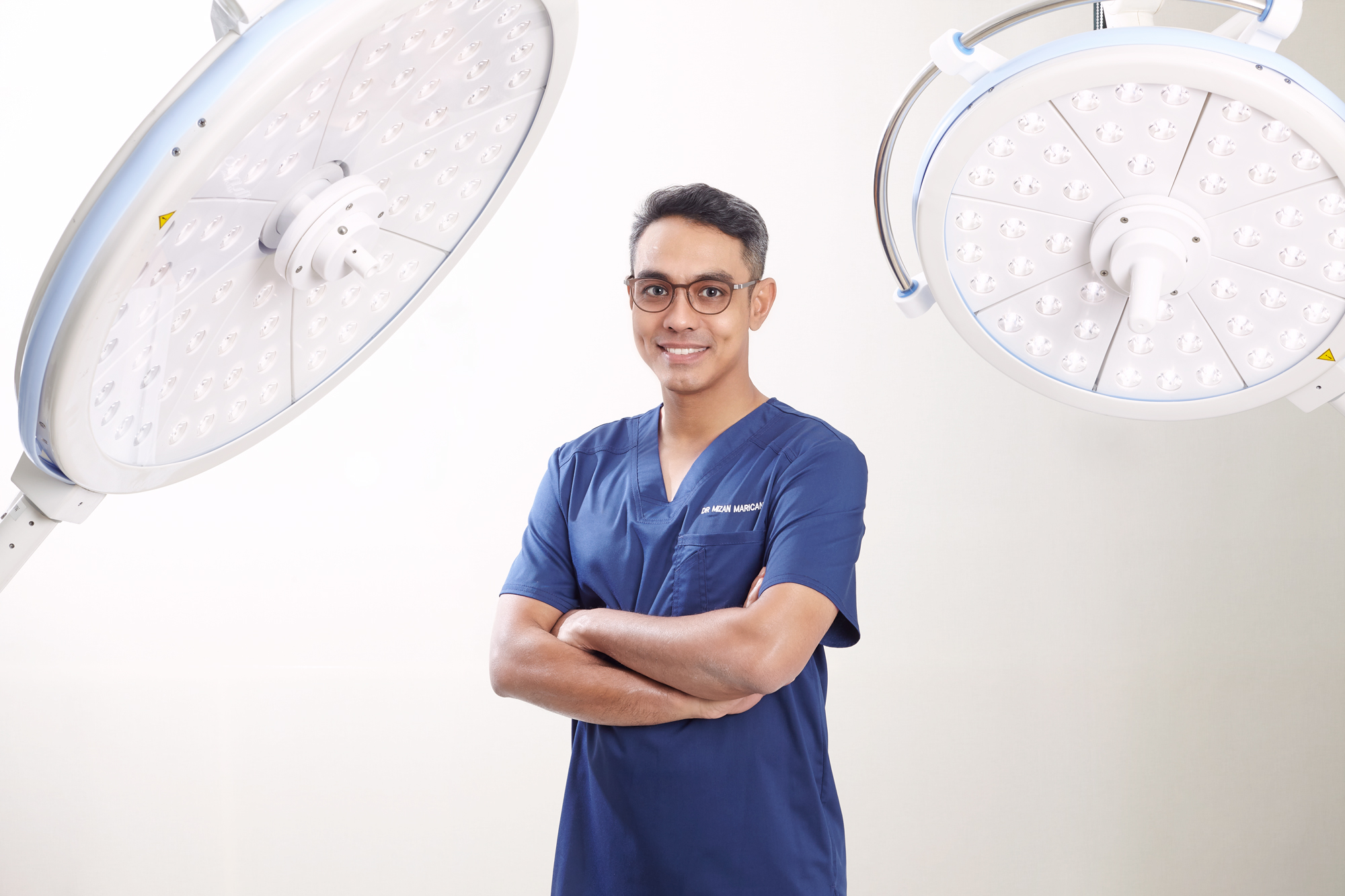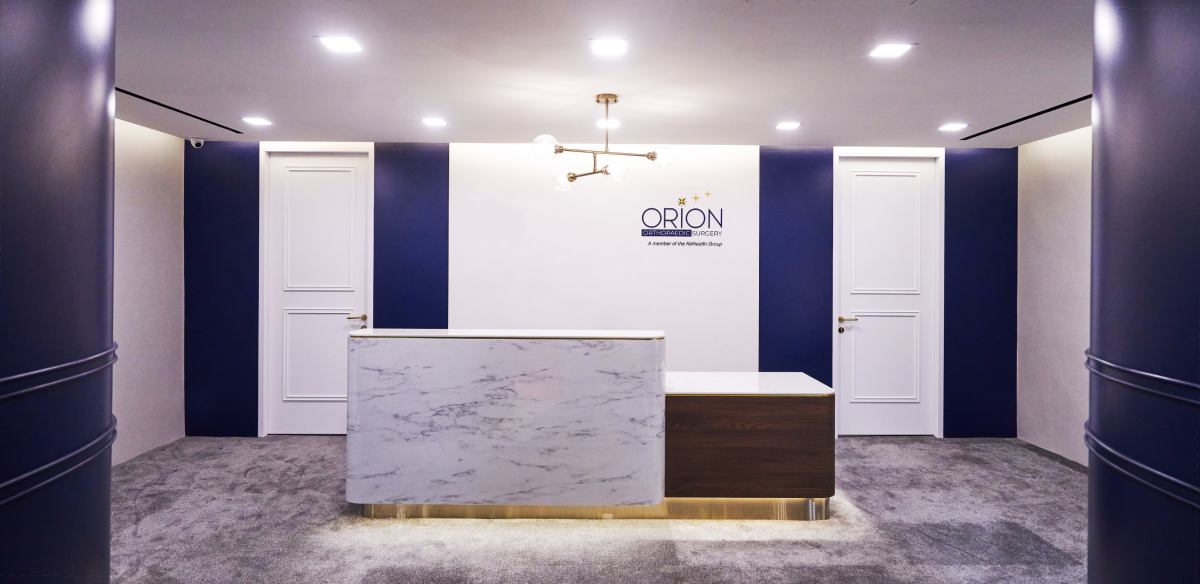Body aches aren't just an elderly issue. A doctor tells us when you should seek help for that pain you're enduring


 PUBLISHED ONMay 05, 2021 10:00 AMBYKimberly Anne Lim
PUBLISHED ONMay 05, 2021 10:00 AMBYKimberly Anne LimWorking long hours in front of a computer got your body aching? Or maybe you're guilty of overdoing it in the gym.
Aches and pains may seem like part and parcel of getting older, but they can affect your quality of life and make even the shortest flight of stairs seem like a Ninja Warrior obstacle course.
Pain from injuries can happen to anyone — even to those who are young and fit.
Play sports? You could be at a greater risk for injuries.
Dr Mizan Marican, an orthopaedic surgeon at Orion Orthopaedic Surgery, an avid golfer, cyclist and tennis player, tells us that he's had his fair share of injuries.
When should you seek help for an injury? Is running really bad for you? We sit down for a chat with Dr Mizan to clear the air and dispel some of the biggest misconceptions around sports injuries.

Dr Mizan: I suppose a simple way to describe sports injuries is pain, stiffness or disabilities that you experience after playing a certain sport or exercise.
As you grow older, your ligaments and meniscus are not as stretchable, and they tend to be a bit more vulnerable to injury. For the elderly, you may even injure your shoulder just by reaching out for something, and not necessarily from playing sports.
Dr Mizan: Running, per se, is not bad for your joints but various other factors may cause you to have pain after running. With running, everyone has a different running style and pace. They wear different running shoes and they have differently-shaped feet. Some love to run on the road, while others make it a point to run on turf.
If you like running, you can go to a running lab so that they can really look at your biomechanics and give some suggestions in terms of your footwear or your running technique.
Dr Mizan: It's important for athletes to know the difference between warming up and stretching. So before any sport that you do, it's often good to warm your body up so that there's more blood supply to the muscles. This also helps prevent injuries.
[[nid:492899]]
You can do a gentle jog on the spot. You could also do simple push ups, squats or lunges.
For stretching, there are two main kinds of stretching — one is dynamic stretching and the other is static stretching. Dynamic stretching is important to do before the start of your physical activity. It involves movements of joints where you stretch several muscles at the same time.
Static stretching is not encouraged before the exercise itself because it may cause pain. It should mostly be done after the exercise to help prevent delayed onset of muscle soreness.
If patients are coming back from an injury, it's best to consult either a doctor or physiotherapist on when to return to sports and how to do it safely.
Dr Mizan: Turmeric and ginger are naturally occurring anti-inflammatories that have been used for centuries. In fact, some modern supplements contain ginger and turmeric.
They are safe to consume as long as you get them from a reputable pharmacy in Singapore. Ensure you don't have any allergies or medical conditions that will make these supplements contraindicated for you.
Medicated plasters are effective for muscle aches and pains. They are best used at different spots to prevent any localised skin reactions.
Dr Mizan: For my personal sitting arrangement, I use a seat which supports the curves in my neck and provides lumbar support. My laptop is also on a raised platform, so that the screen is at eye level. My wrist and fingers are in an ergonomic position to prevent any strain and discomfort.
[[nid:518503]]
You should also include regular stretches into your daily life. Even if you're at your desk, you can still stand up and stretch for 10 seconds every hour or so. This helps to alleviate any muscle tension around the shoulders and upper back that is very common after spending so much time in front of your laptop.

Dr Mizan: Do give it a reasonable amount of time to get better with rest, ice, compression and elevation. If the pain or the swelling worsens, I would suggest seeing a specialist sooner rather than later. This is to get a professional assessment and accurate diagnosis before you receive treatment.
As an example, an early meniscal tear in your knees may be repairable. A complex tear, however, may not be fully repaired and may continue to cause pain.
Dr Mizan: In these replacement procedures, we only remove the cartilage and meniscus that are worn out and replace them with an implant which consists of metal alloys and high-grade plastic.
For younger patients in their late 40s or early 50s, they often only have wear and tear in one compartment of their knee. As such, we perform partial knee replacements so that they may go about their active lives.
If other parts of their knees wear out over time, this partial knee replacement can be converted to a total knee replacement in the future.
In patients who are 55 years old and above, most of their knee joints are already worn out. This particular group of patients would benefit from a total knee replacement.
The hip is slightly different to the knee as it is a ball and socket joint. The socket (acetabulum) is reamed out to remove all the cartilage that has degenerated. A metal cup lined with a high-grade plastic insert is then placed into the socket.
The worn-out head of the femur bone is removed and discarded. It is replaced by a titanium implant with a ceramic head. The patients will then be able to walk without further pain or stiffness
Dr Mizan: The traditional approach to performing a hip replacement is through a posterior or a lateral approach. The skin incision in a posterior approach is over the buttock itself while that for the lateral approach is on the side of your hip.
The posterior approach is a good technique and has been used for decades. There are, however, some limitations with it — patients are not allowed to squat, kneel or cross their legs after surgery. This is to reduce the risk of posterior dislocation of the implants.
During my orthopaedic fellowship in Melbourne in 2017, I learned a new technique of doing the hip replacement through the front, or the direct anterior approach.
The difference and the benefits of this approach is that you don't cut any muscles, you just push them to the sides when you perform the hip replacement. Patients are allowed to squat, kneel and cross their legs after surgery. In fact, they can walk two to four hours after the end of the surgery.
Patients lie on their backs during surgery; this allows me to measure their leg lengths more accurately and use X-rays during surgery to assess the size and position of the implants.
Dr Mizan: Not really, but it depends on the strength of the metal detector in the individual airports.
There are millions of people with metal in their bodies throughout the world who travel all the time. Most of the time, the customs officers will see that there's a scar, and they tend to just let you pass.
For all our patients who have had a hip replacement or knee replacement, they will receive an implant card with the details of their surgery to verify that they've had implants put in.
Dr Mizan: On a cold day, there are pressure changes in the knee itself. This leads to muscles and tendons expanding and contracting, which leads to pain. The fluid inside the knee (synovial fluid) also becomes thicker causing knee stiffness. It's not the implant, but the body that's reacting to the change in temperature.
I have had some patients who have requested for metal implants to be removed from their body. Just as I had advised them, they continued to have some aches on a cold day despite removing the metal implants.
Dr Mizan Marican has over 10 years of orthopaedic experience and is highly trained in hip and knee replacement procedures. Through his work at Orion Orthopaedic Surgery, he strives to restore the quality of life for his patients.
This article is brought to you in partnership with Orion Orthopaedic Surgery.
kimberlylim@asiaone.com